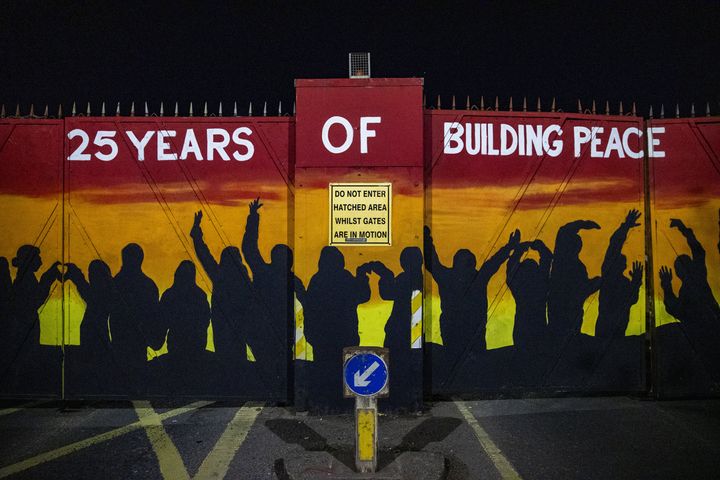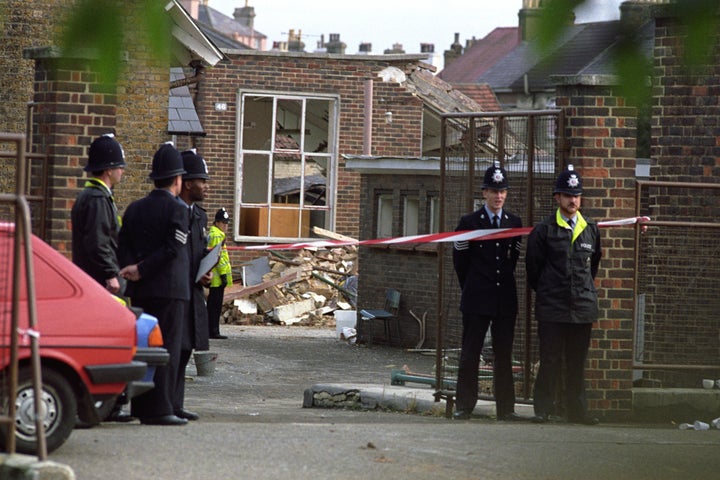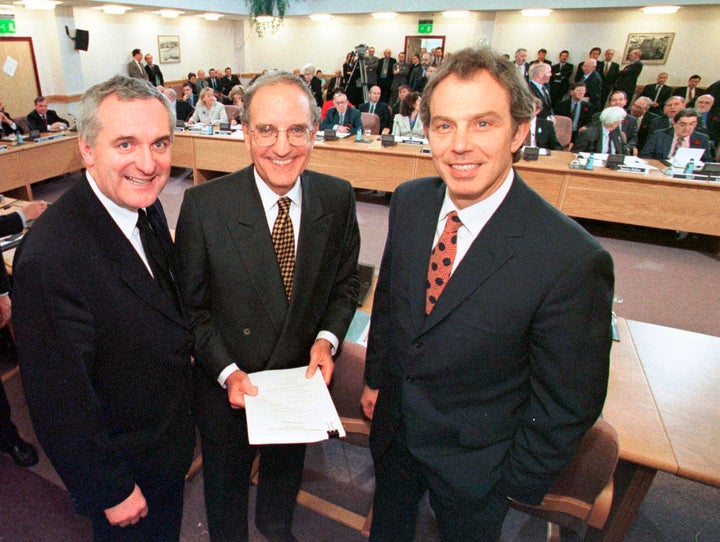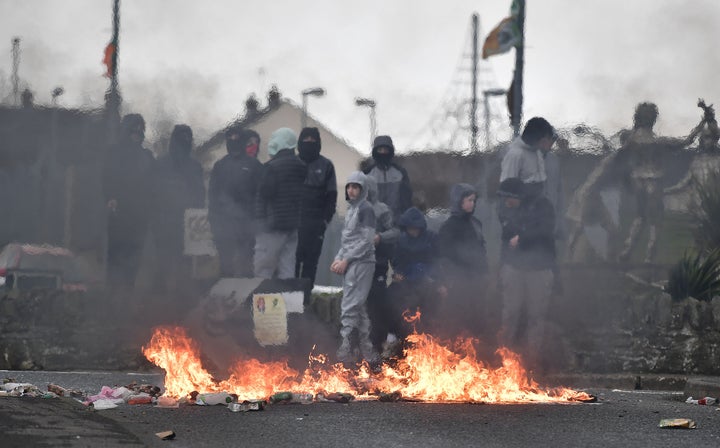
This week, the UK, Ireland and the US will mark 25 years since the Good Friday Agreement was signed.
US President Joe Biden and UK PM Rishi Sunak will be visiting Northern Ireland this week.
Here’s why this occasion was such a big deal – and why politicians are especially keen to make sure the peace treaty stays intact today.
Why was there conflict in Northern Ireland?
To understand why the Good Friday Agreement was and still is so important, you have to first know just how tense the situation in Northern Ireland was for the latter half of the 20th Century.
In 1921, Northern Ireland split from Ireland but remained part of the UK, while the Republic of Ireland became an independent nation.
Not everyone wanted the two Irish regions to separate though. The split triggered a rise in nationalists, who wanted unity with Ireland, and unionists, who were pushing to stay with Britain.
By the 1960s, these factions had evolved into armed groups, such as the Irish Republican Army (IRA) and Ulster Volunteer Force (UVF).
And while this divide did have some religious undercurrents (Catholics wanted to be united with Ireland, while Protestants wished to stay aligned with Britain), it was ultimately a cultural and political split.
British troops were then deployed to Northern Ireland in an effort to keep the peace – although not everyone appreciated their presence. It became the British Army’s longest operation.
This period was generally dubbed “The Troubles” and resulted in significant violence and bloodshed. Approximately 3,720 people were killed, and 47,541 injured, according to Ulster University, as shootings and bombings became a regular occurrence.

What is in the Good Friday Agreement?
This was a momentous political treaty, signed by both the UK and Ireland on April 10, 1998 and backed by votes from the public in Northern Ireland and the Republic of Ireland.
Also known as the Belfast agreement, it was meant to end the three decades of violence within Northern Ireland by calling on the warring communities to co-operate and run the region together.
The agreement saw the Westminster government set up a devolved government for the region known as Northern Ireland executive in Stormont. The executive would have authority over various government matters such as health and education within the region.
The Good Friday Agreement also said that no matter which community you were from, your human rights would be respected.
It added that Northern Ireland could only leave the UK through a referendum, if most voters in Northern Ireland backed the move, and that people in the region could have Irish or British nationality – or both.
However, armed groups had to get rid of their weapons. In exchange, anyone involved in the conflict would be released from prison and the UK agreed to scale back its military operation in the region.
Sporadic violence has occurred in the 25 years since, but for the most part, the treaty was a massive breakthrough.

Why is Joe Biden particularly interested in the Agreement?
Biden is just the latest US President to show he is invested in the maintenance of the treaty.
Bill Clinton visited Northern Ireland three times during his presidency, George W Bush twice, and Barack Obama once.
But Biden is seen to be particularly interested than his predecessors, having made it very clear how important his Irish roots are to him, along with peace on the island of Ireland.
The US is also informally known as the “third guarantor” of the agreement (after Britain and Ireland).

Why is the Agreement so important right now?
The Northern Ireland executive hasn’t actually been operating for more than a year.
That’s because the largest Unionist party, the DUP (the Democratic Unionist Party) has refused to take its seats, due to Brexit.
Leaving the EU meant the only land border in the UK with the bloc would be between Northern Ireland and the Republic.
Fearing that tensions could return if checks were required between the UK and the EU markets on this land border, it was agreed that a different system would be put in place out of respect for the Good Friday Agreement after Brexit.
It’s worth remembering that prior to the 1998 treaty, anyone crossing the border was subject to British Army security checks, with surveillance watchtowers – and no-one wanted to see these return.
But, the Unionists believe that the current Brexit deal means NI is too separate from the rest of the UK, and refuse to take their seats in Stormont until the agreement is settled.

What has been done to prevent tensions reviving after Brexit?
Northern Ireland Protocol
After many, many months of discussions and proposals – including Theresa May’s ill-fated Northern Ireland backstop – the UK and the EU agreed to the Northern Ireland Protocol.
This meant that rather than having a trade barrier down the Irish land border, there would be one in the Irish Sea on goods coming from Britain to Northern Ireland. Only once goods are transported through NI would they be able to go to Ireland.
Any goods going from NI to Ireland would not need to be checked as they would all be following the same EU trade rules.
This was backed by NI’s largest nationalist party, Sinn Fein, who claimed it was necessary to keep the Good Friday Agreement in place.
The DUP didn’t agree. They said it just split NI from the rest of the UK and have refused to take their seats in Stormont because of it.
Windsor Framework
Despite once supporting it, Downing Street now thinks that protocol is “upsetting the balance of the Good Friday Agreement”.
This has got backs up in the EU because they thought it was the “one and only solution” to protecting the peace process.
In February, both sides agreed to the Windsor Framework to reduce the number of checks on goods coming up in NI from Britain (and it was backed by the White House).
This would involve splitting goods into two different lanes – the Green Lane is for goods which are going only to NI and therefore do not need to be checked.
Meanwhile, goods intended for Ireland and the EU go into the Red Lane, where they will be checked.
The DUP has said it will vote against the Windsor Framework though, meaning Stormont will still be deadlocked.
Meanwhile, Westminster has its fingers crossed that Biden’s endorsement will encourage nay-sayers on the Windsor Framework to appreciate it.
